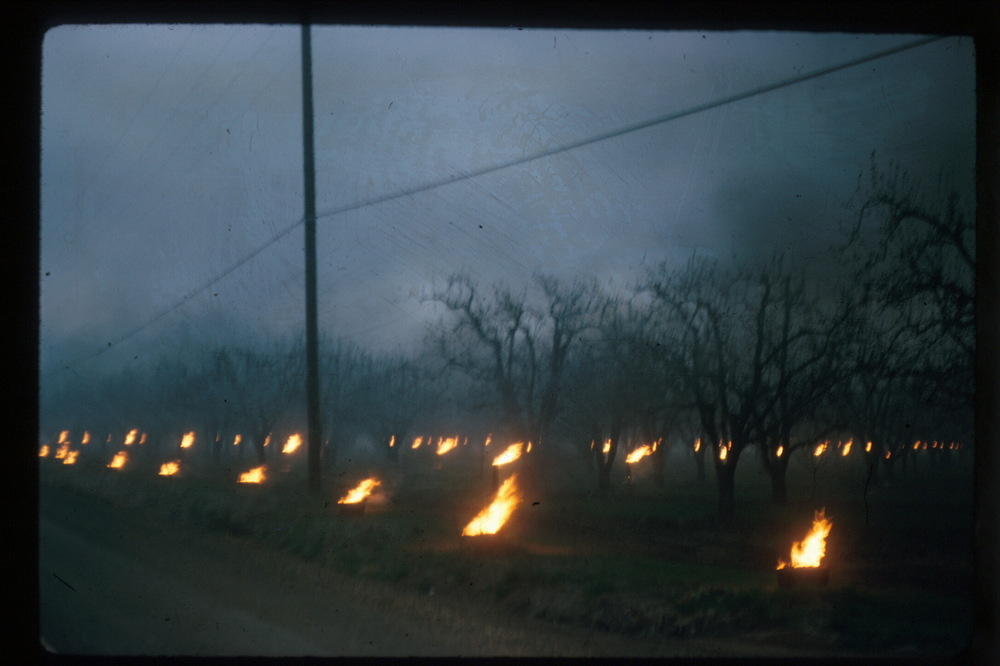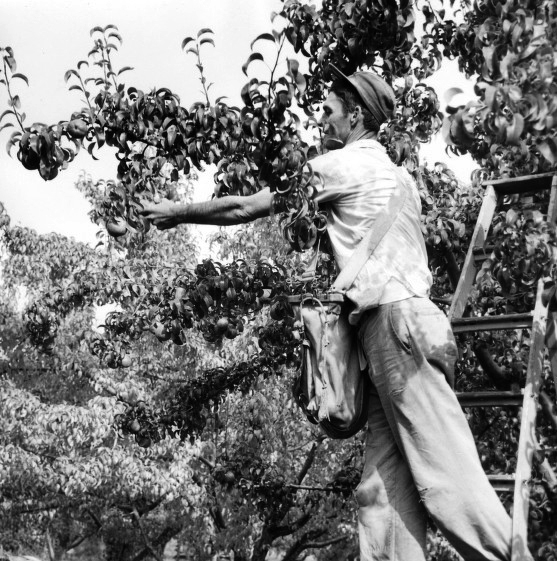Commercial orchards were first planted in Oregon in the 1860s. When orchardists first experienced crop loss due to frost, they quickly developed a way to protect the blossoms and young fruitlets.
Based on information coming out of Florida, orchardists in the West began to use smudging to protect the fruit from frost. It was commonly believed that a heavy smudge—that is, smoke hanging over an orchard—would retain heat and prevent the morning sun from thawing the young fruitlets too rapidly. In those early days, anything that produced smoke (e.g., wet straw, manure, leaves) was burned—hence, the term smudging.
When orchardists learned that it was the heat, not the smoke, that protected their crops, they adopted a new term, orchard heating. To generate heat, wood and coal were burned in V-shaped pots placed on wire frames. An early report indicates that a 250-acre orchard required about 1,000 such heaters for protection.
After 1910, when crude oil became available in sufficient quantities, orchardists switched from wood and coal. Early oil heaters, or smudgepots, were nothing more than a five-quart lard pails with lids. Clusters of these pails were placed throughout an orchard, the number depending on how low the temperature was. One early account described a morning after smudging this way: "a black smoky sunrise, so thick at times that the sun couldn't be seen until mid morning or afternoon."
Public concerns about air quality required orchardists to reduce the smoke produced by the burners. They used new designs such as lazy-flames and jumbo cones before settling on the return-stack design that generated the least amount of smoke.
Since the 1970s, when the price of oil increased significantly, modern orchards have used wind machines that mix warmer air above the orchards with colder air around the trees. The new machines are used either alone or in combination with orchard heaters (often propane heaters) and sprinklers, which insulate blossoms as water freezes on them.
With continued high energy costs, smudgepots are doomed to extinction, although they still appear as part of exhibitions such as the annual "Art in Bloom" competition in Medford, where smudgepots have been transformed into works of art.
-
![]()
Early morning after smudging.
Courtesy of Philip Van Buskirk
-
![]()
Smudgepots in an orchard.
Courtesy of Philip Van Buskirk
Related Entries
-
![Bing cherry]()
Bing cherry
Bing, perhaps the most famous and highly regarded sweet cherry in the w…
-
Harry & David/Bear Creek Orchards
Harry & David, the marketing brand for Medford's Bear Creek Corporation…
-
Pears and the pear industry
European pears (Pyrus communis) thrive in the temperate climate of the …
Related Historical Records
Further Reading
Cordy, C.B. "History of the Rogue Valley Fruit Industry." Medford, 1979.





